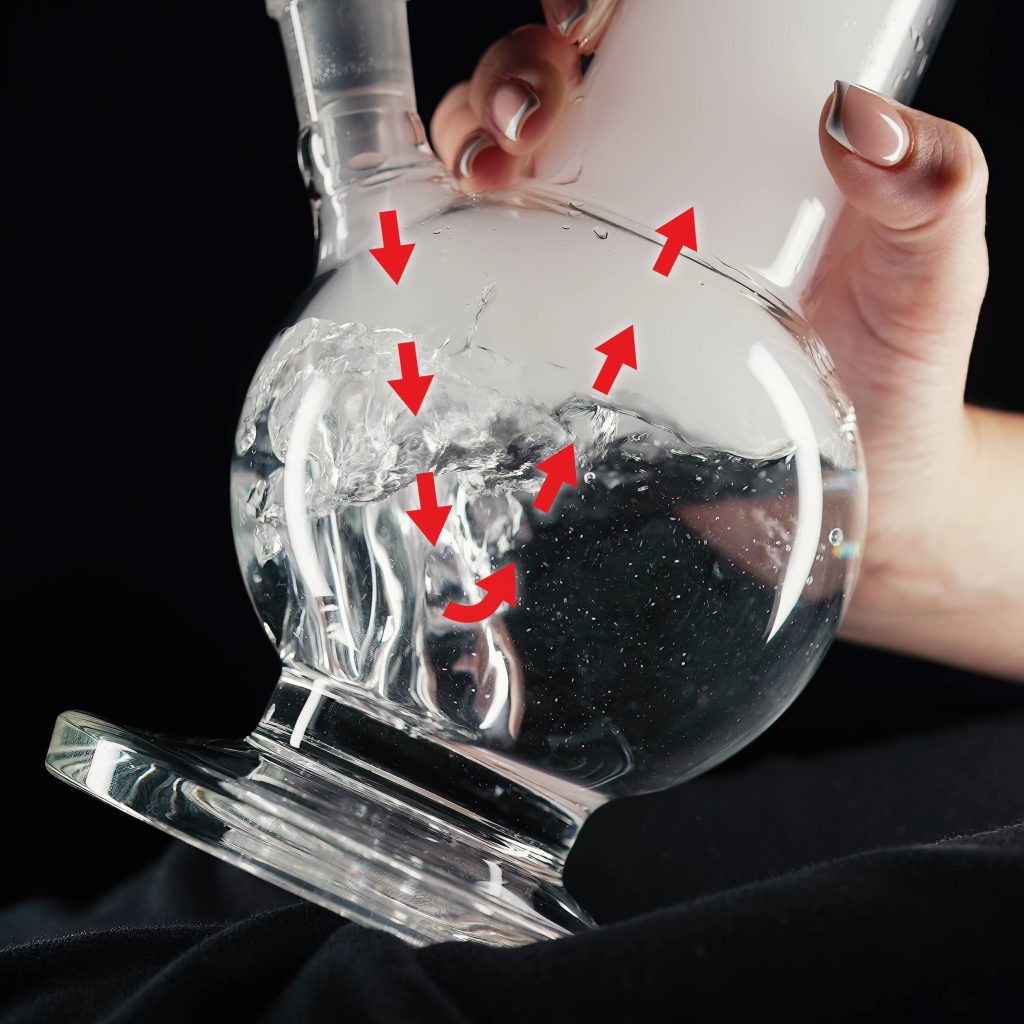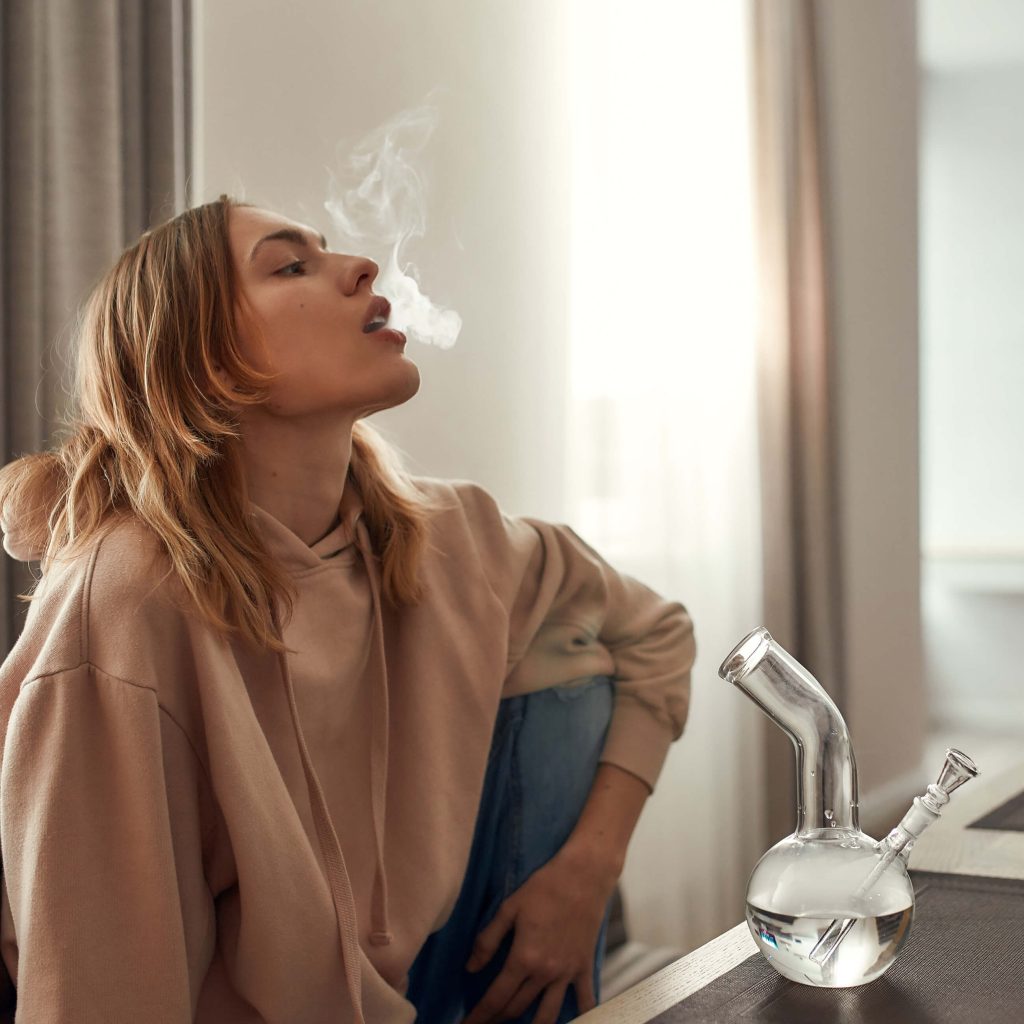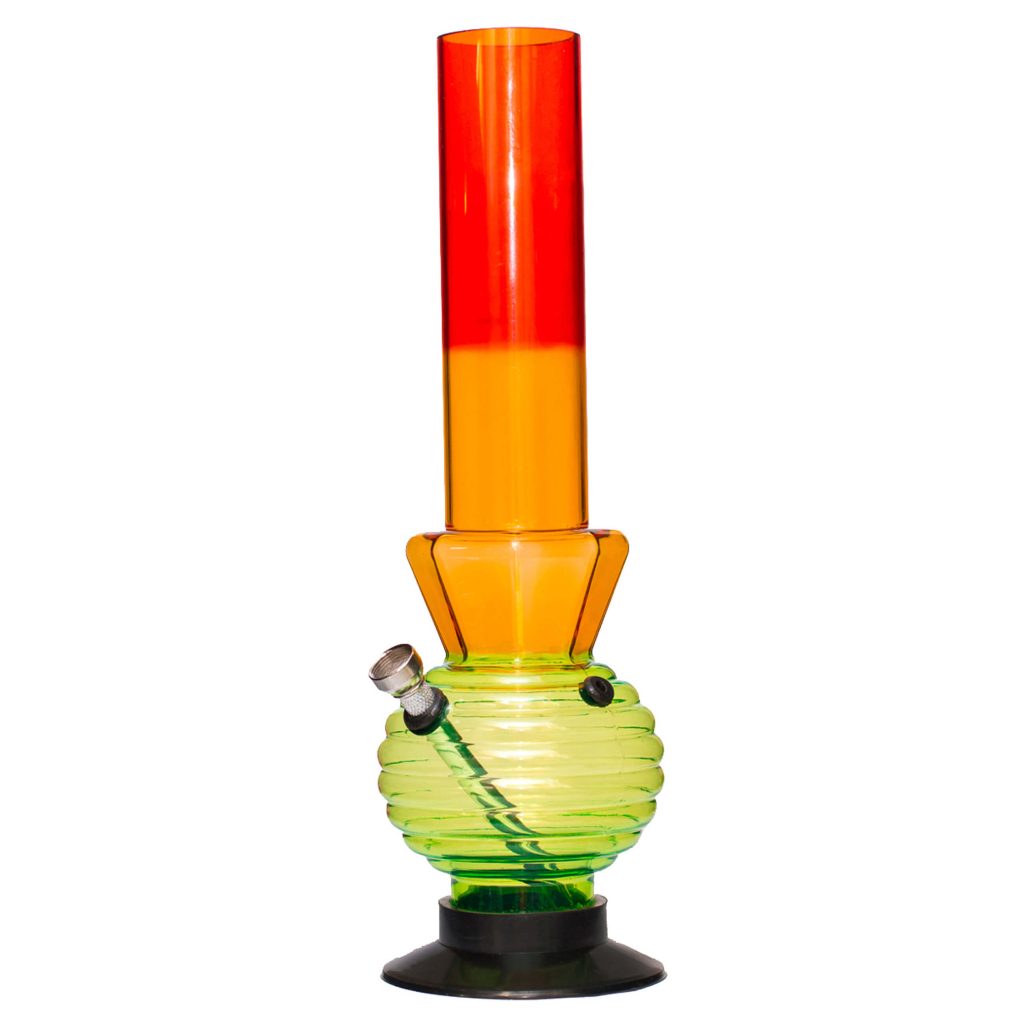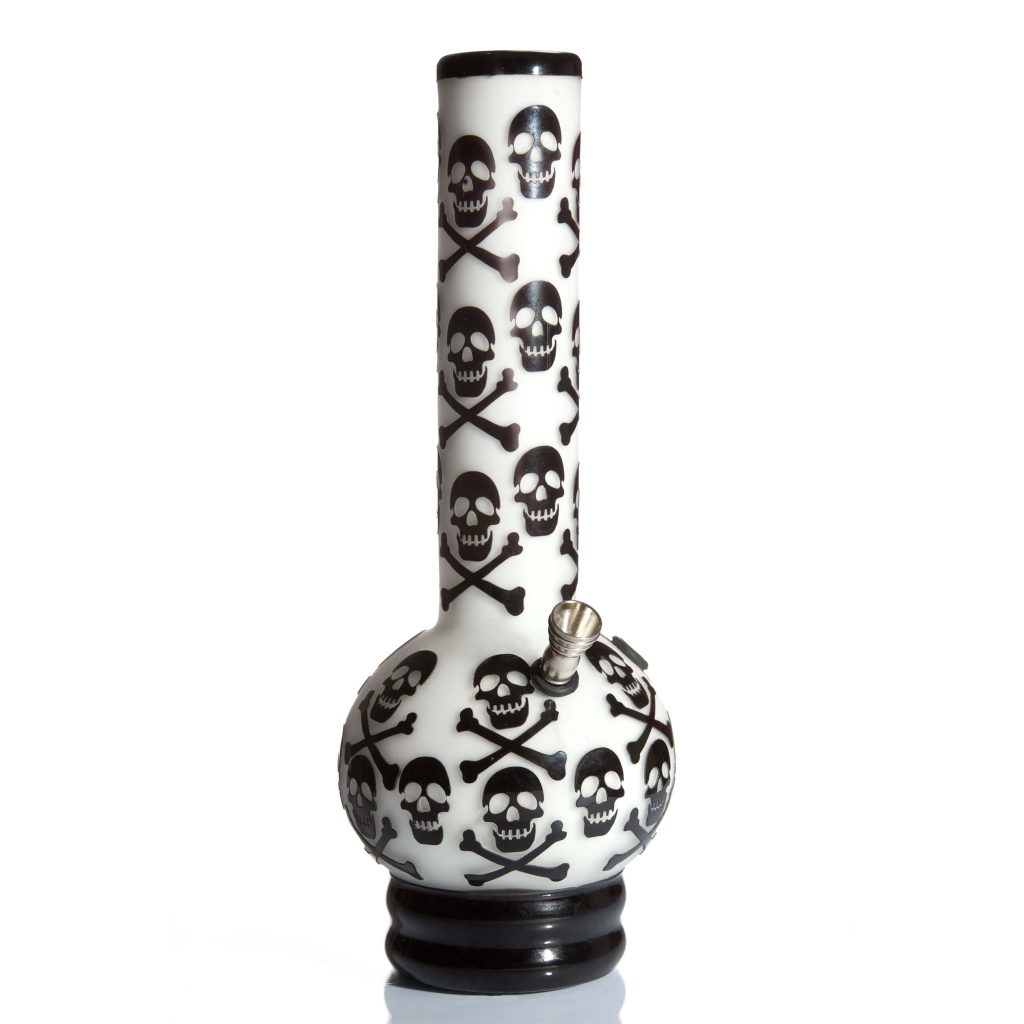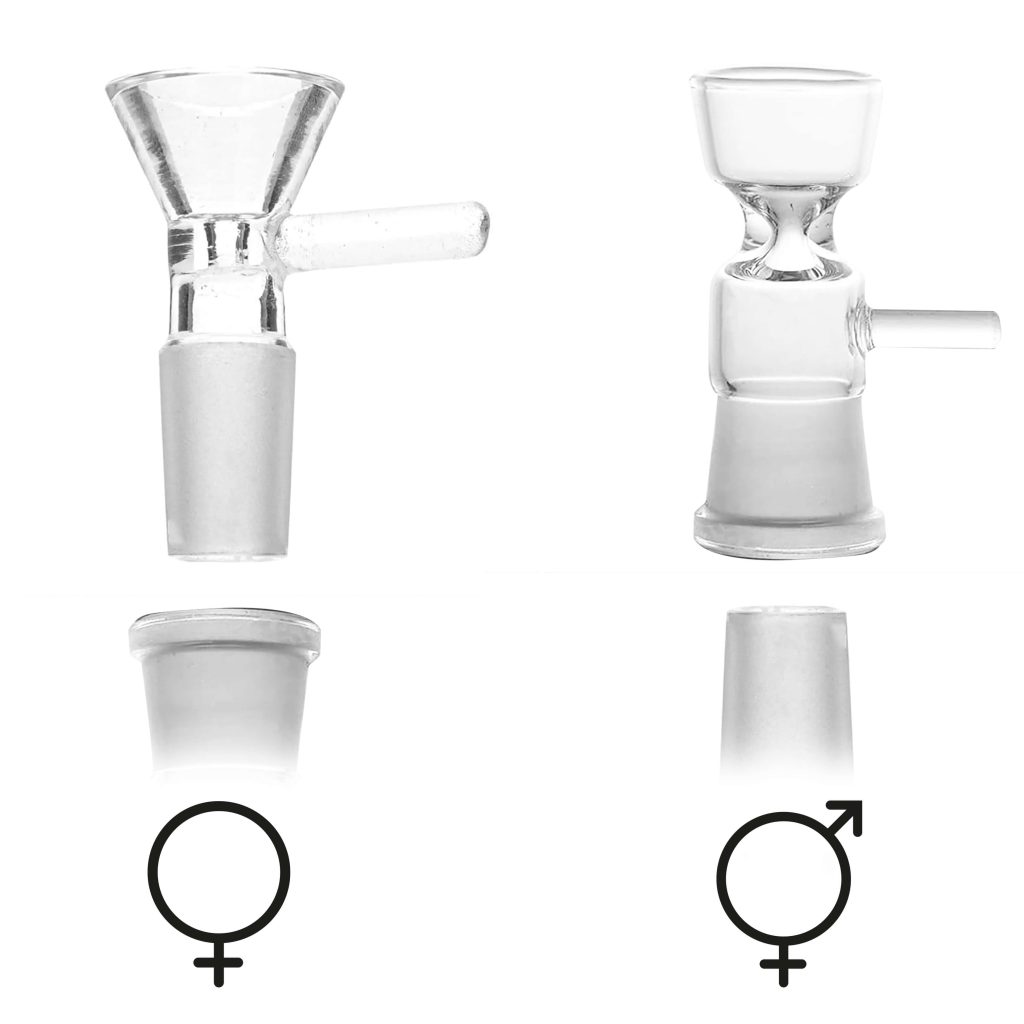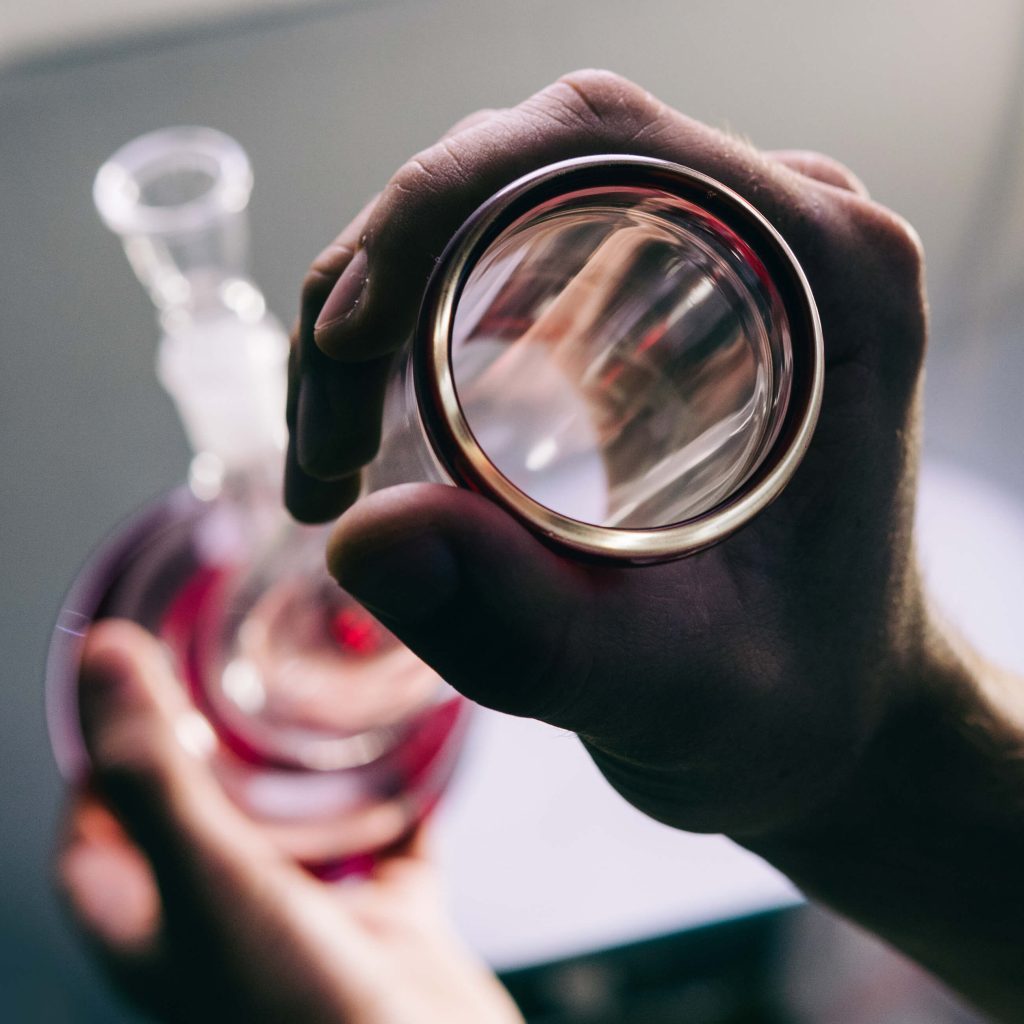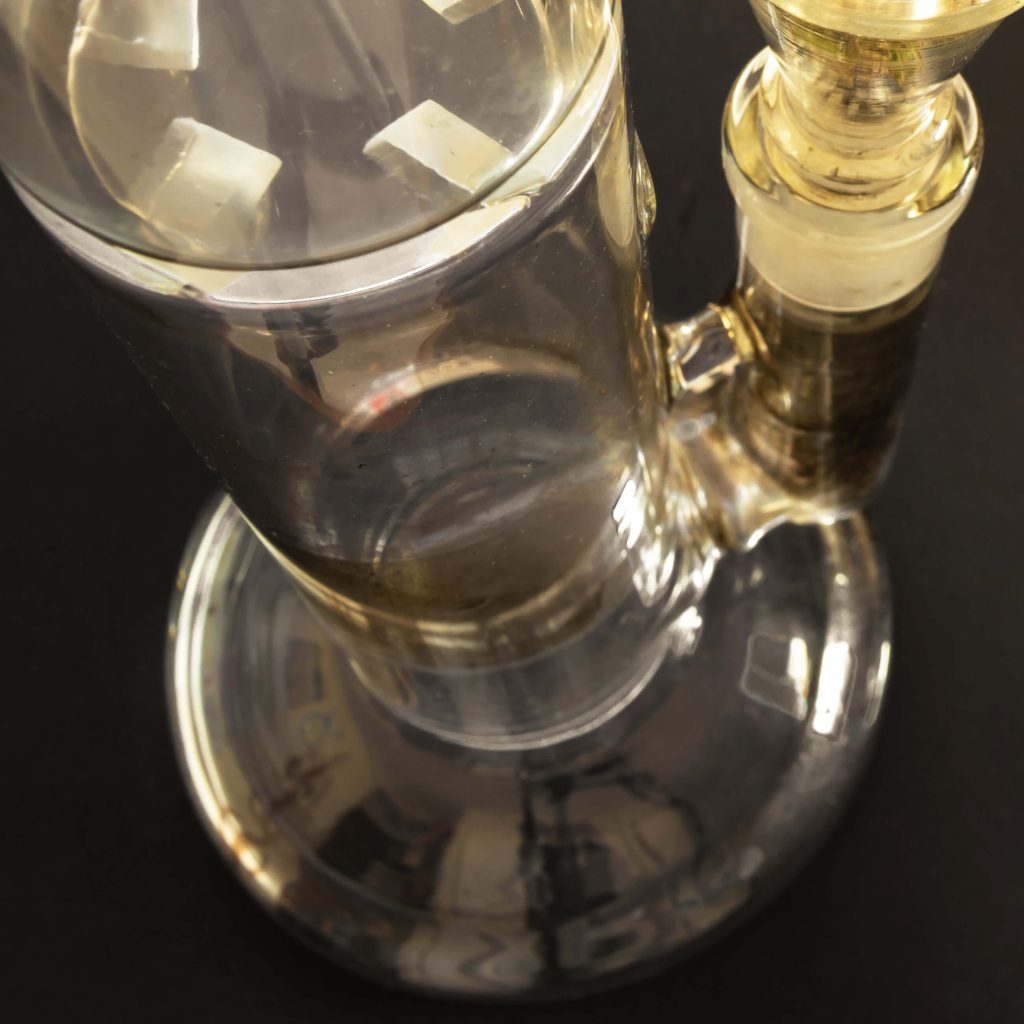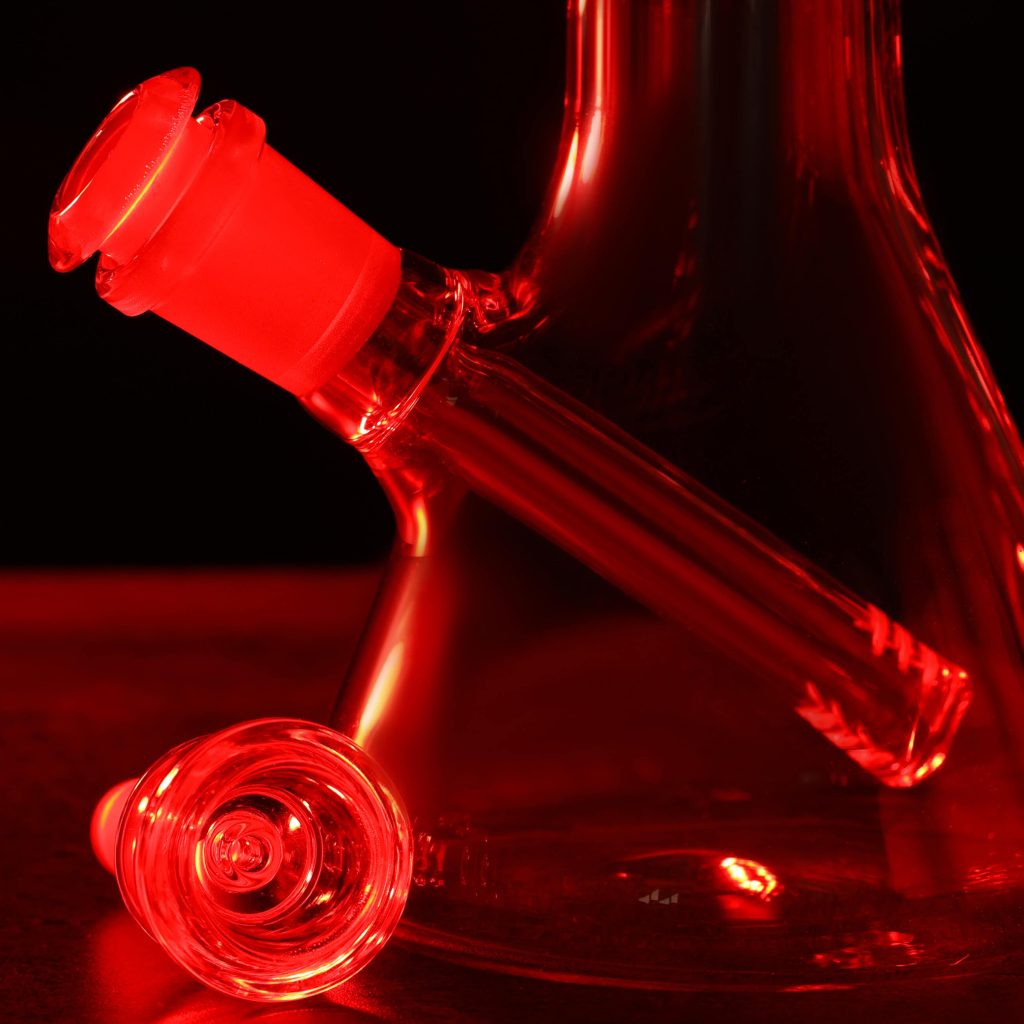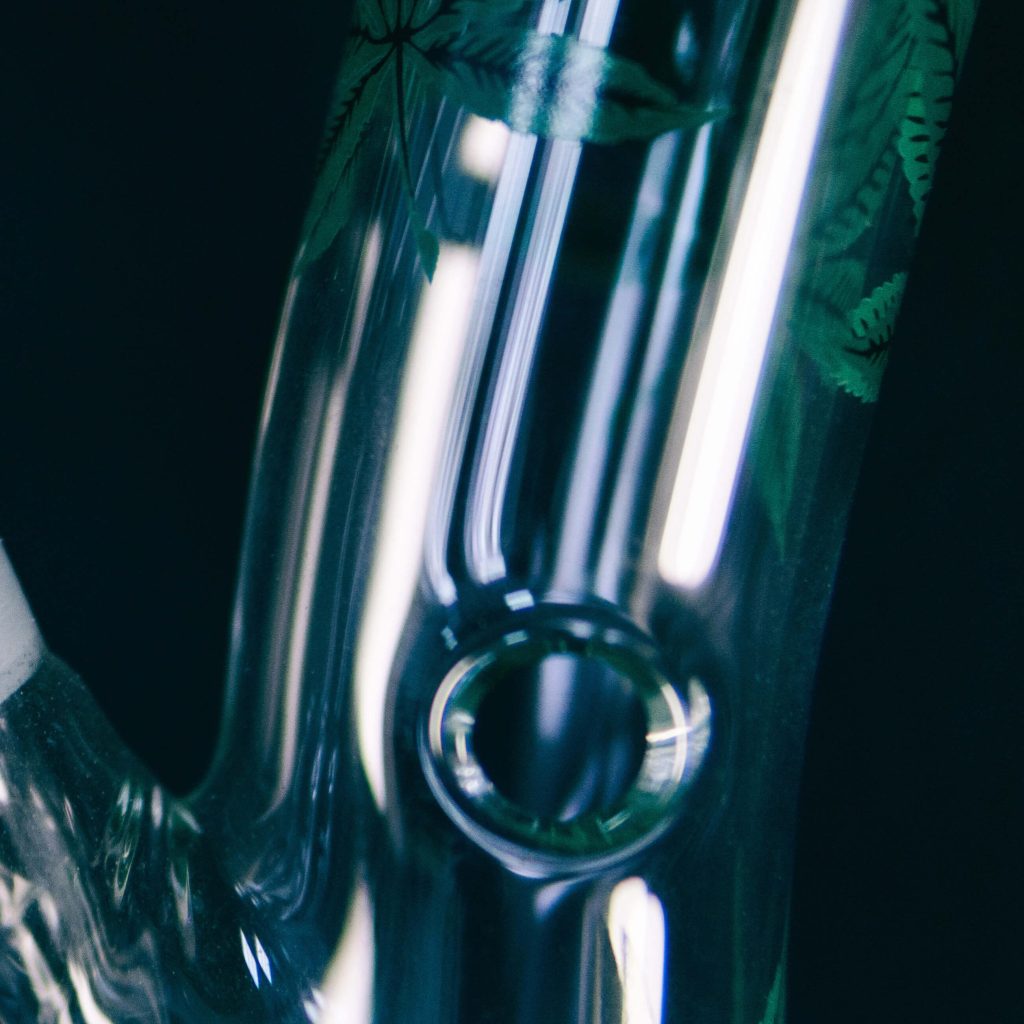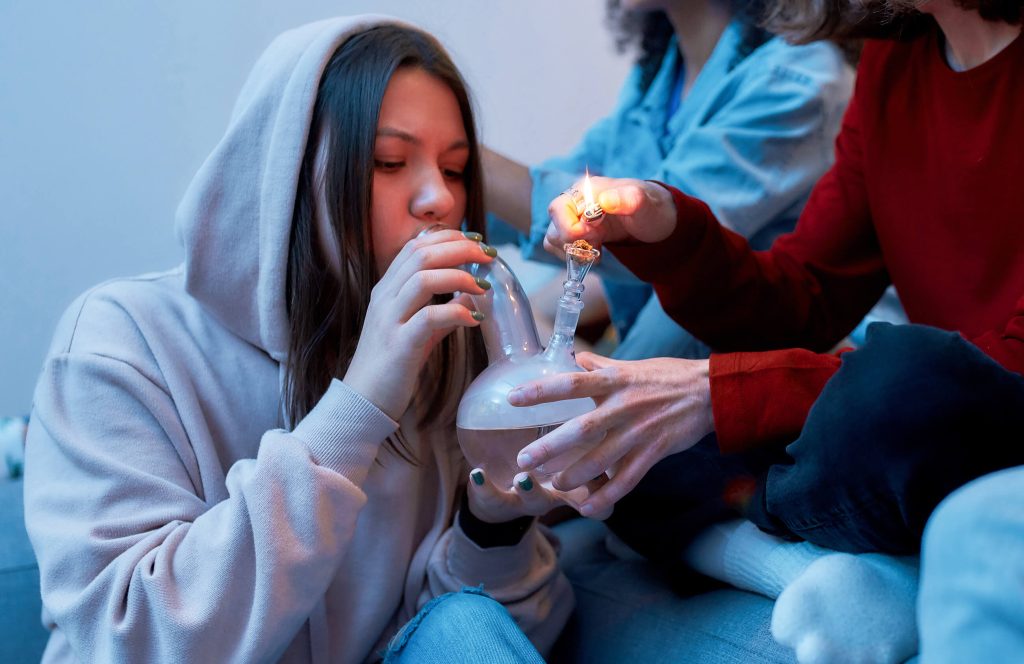A bong is a waterpipe that has been used to smoke dry herbs, including tobacco and other dried plants for centuries. Having gained popularity within the cannabis community, we guide you through the basics of using a bong in our step-by-step guide and explain how they work and how to keep your bong clean!
The renaissance of the bong started in the 1960s in the United States by Bob Snodgrass, also known as the Godfather of Glass. He introduced hundreds of Grateful Dead fans to his mind-blowing glass-blowing techniques and created the glass-blowing subculture that can be seen across countless headshops today.
Now, it’s a common fact that almost every stoner has smoked a bong or owns one. Bongs have become popular in the cannabis subculture, and many will remember the iconic scene in Grandma’s Boy, where a glass bong was used as a flower vase. Nevertheless, many will ask, what are they made from, how do you use them, and why?
What is a bong?
A bong, often called a water pipe, is a smoking apparatus used to consume dried herbs and hash. The word bong is derived from baung, and the word’s first use in Western culture was in the McFarland Thai-English Dictionary, published in 1944. A bong was described as “a bamboo waterpipe for smoking kancha, tree, hashish, or the hemp plant.”
They are vertical, with a base for the water to sit in and a chamber for the smoke to collect in. Like a pipe, the bowl is where the cannabis is burned and connects to the base with a short tube. It pulls smoke through the water into the vertical chamber, ready to inhale.
The water in the bong provides a means of filtration, cooling the smoke before it is inhaled into the consumer’s lungs. They come in various shapes and sizes and can be made from five mediums, but more on that later!
How do bongs work?
The bong works on fundamental physics. When igniting your dry flower, it will start to combust and release smoke, which will be drawn through the downstem into the chamber. Once you begin to inhale, a vacuum inside the bong is created.
The smoke percolates through the water, which acts as a diffuser to cool the smoke before it rises into the chamber. Because the outside pressure is greater than the pressure inside the chamber, the smoke will be left inside until the carb or bowl is removed. Once the airflow is opened, the smoke will rush into the lungs.
Why do people use bongs?
Compared to other methods of consuming cannabis, the bong is, by far, one of the easiest. For example, there is no need to roll, and you can easily manage dosing requirements. They are ideal for consuming a minimal amount of cannabis, giving you a large dosage while using minimal amounts of dried flowers.
During inhalation, joints can often be harsh on the throat. Consuming cannabis through a bong lowers the temperature of the smoke through water filtration, providing a smoother hit. When smoking a joint, cannabis emits a pungent aroma which accumulates in the air, which may cause unwanted attention. Bongs limit the amount of smoke and are an excellent alternative.
What materials can bongs be made of?
Bongs can be made from five primary materials, and each has its advantages and disadvantages, so let us take a look at each:
1. Glass
Glass bongs are the most popular within the cannabis community, giving you a clean and pure taste. They come in many different styles and shapes, some extraordinarily extravagant and attractive.
Seeing the smoke rise in the chamber is incredible and is an excellent indicator of the size of the bong hit. However, be warned that if you don’t clean your bong regularly, you will see a gradual build-up of resin, and glass is a highly fragile material.
Luckily, they’re straightforward to clean using isopropyl alcohol. Putting your bong in the dishwasher is not recommended, as high temperatures can lead to cracking and a build-up of unwanted resin in the cleaning department of your washer.
2. Bamboo
Bamboo bongs are traditional throughout Asia and have been used for centuries. Handcrafted from natural bamboo, they are basic but provide an effective consumption method. Bamboo is highly durable and perfect for those social occasions if you have an incredibly clumsy group of friends.
Most bamboo bongs will have beeswax lining to avoid the build-up of tar. In terms of cleanability, they require a more intricate cleaning process compared to other materials to help preserve the delicate lining.
3. Acrylic
If you want a cost-effective option, acrylic bongs are the cheapest on the market, highly durable and long-lasting. They’re great for beginners looking for an entry-level bong.
Nevertheless, there are several drawbacks to acrylic bongs. They are rudimentary, and unlike glass or ceramic, they begin to taste harsh after the first few hits, hindering the smoking experience. Although they can be cleaned, removing the accumulation of resin is a very time-consuming process.
If you want a bong to display, steer away from acrylic bongs. But, if you’re looking for a sturdy, hardwearing bong for travelling and parties – this could be it.
4. Ceramic
Ceramic absorbs and dissipates heat faster than glass, providing a smooth, flavoursome hit. As ceramic is widely available, they are much more affordable than glass. It’s a highly versatile material and can be customised into various shapes. Perfect if you are looking for a novelty display or a piece for those special occasions. Ideal for the creative smoker and artist among us!
Most ceramic bongs have glazed interiors to avoid resin build-up within the chamber. Many prefer to clean the bong manually rather than put it in the dishwasher to prevent damaging the glaze.
5. Silicone
A newcomer to the world of cannabis paraphernalia, silicone bongs are durable, lightweight, extremely portable and ideal for travelling. It’s an incredibly versatile and flexible material that can be moulded into any shape and size.
Like glass, the different parts of the silicone bongs can be removed, making them easier to clean. However, some preparation is required before, including a rinse with vinegar, as hot and soapy water won’t be enough to remove resin from the deepest crevices of the bong.
Inevitably, your glass bong won’t last forever, and silicone is an ideal alternative if you want a reasonably priced bong.
Male vs female bong?
Before explaining the parts of the bong, we need to discuss how you determine if the bong you are using is male or female. Most dry-flower bongs will be female, which means the bowl will fit into the joint rather than be placed over the top. Male connections can be found on dab rigs designed for consuming concentrates.
Parts of a bong
Knowing what you’re looking at is vital if you want to make the most of your bong. Let’s dig into the eight main parts and their functions.
Mouthpiece
The mouthpiece is where you will put your mouth when inhaling. The lip is smooth and level, allowing you to create a tight seal around the mouthpiece for optimal usage. Traditionally, the mouthpiece was horizontal. Over time, the mouthpiece became vertical, which is more user-friendly. With the explosion of creativity in the glass-blowing subculture, the possibilities are endless, and you’ll come across a wide variety of mouthpieces.
Chamber
This is where the bellows of smoke are collected before being inhaled through the mouthpiece. The larger the chamber, the more you will inhale!
Base
The bottom of the bong is called the base, where the water sits. The water acts as a diffuser for the combusted smoke before the chamber is filled with smoke. There are various styles, including beakers, straight tubes, and bowls.
Joint
The joint is where the downstem is placed and connects the chamber with the bowl. Some bongs with a fixed stem will not have a downstem, and the bowl will go directly into the joint. It is one of the bong’s most critical parts, as, without the joint, you cannot pull water from the bowl into the chamber.
Downstem
The hollow tube connecting the bowl and chamber is called the downstem. It provides the suction to pull smoke from the bowl, into the downstem and through the water. Most downstems have a female connection and can be found in three main sizes, 10, 14 and 18 mm.
Bowl
A bowl has space for dried herbs and a small carburetor, which goes directly into the downstem. It is vital to keep this clean, as it can dramatically affect the taste of your cannabis. The bowl should be removable with a female connection, which means it can fit directly into the joint. Bowls can come in various shapes and mediums, including glass, aluminium, and ceramic. Depending on the magnitude of the bong, they are mainly available in 10, 14, and 18 mm.
Percolator
Percolators come in many different forms, and similar to water, they help with additional filtration. While most are additional compartments in the main chamber, some can be added as attachments.
Percolators pull the smoke from the downstem through another water filtration, forcing it through tiny holes and breaking the smoke molecules into small bubbles, increasing its surface area. With a larger surface area, the temperature of the smoke will decrease, making the experience smoother.
Carburetor
A carburetor, commonly known as the carb, is a small airflow hole in the bong’s base. It allows you to control airflow and should be covered when lighting the dried flower. Once the cherry has been ignited, you can control the burn by increasing or decreasing air through the carb. Once the chamber is filled, remove your finger; the air will rush into your lungs, like removing the downstem or bowl.
How to use a bong
Now that you are familiar with the parts of the bong, here is a step-by-step guide to using a bong!
1. Prepare the bong
Firstly, check that the bong is crystal clean and that you can access high-quality cannabis flowers. Fill the bong with the correct amount of water. Begin to pour the water through the mouthpiece, ensuring the downstem is submerged correctly.
It is recommended to try pulling air through the bong before adding dry flowers. Too much water and you will be getting bong water in your mouth during inhalation. Too little water and the smoke will be very harsh, causing you to cough.
2. Pack the bowl
Grind your cannabis with a grinder before packing the bowl, as this will create optimal burnability and ensure your flowers do not block the bowl. Depending on your requirements, you can put as much cannabis in the bowl as desired. A pipe screen is also optional if you do not want any cannabis being pulled through the downstem and into the water.
Grab a small amount of ground cannabis, place it into the bowl, and tap it down. Don’t pack the cannabis too tight, as it will cause a lack of airflow and decreased burnability!
3. Light the bowl
Using a hemp wick, light the bowl centrally while continuing to breathe in on the mouthpiece. Inhaling from the mouthpiece will pull the combusted smoke into the downstem and through the water before filling the chamber. Be warned, the harder you inhale, the greater volume of smoke inside the chamber.
4. Inhale and clear the chamber
First, ensure you have filled the chamber with the required volume of smoke. Then remove the bowl, or if the bowl and downstem are attached, remove the downstem or your finger from the carb. This allows optimal airflow, pushing the smoke through the downstem, filling the chamber and directly into your lungs. Inhale and exhale.
How to clean a bong
It is always recommended to clean your bong after every session to avoid the building up of unwanted resin, which can hinder your smoking experience. Many bong cleaning products are on the market, but 99% isopropyl alcohol and coarse salt are usually the go-to method.
- Take apart the components of the bong and place the downstem and bowl into a zipper-locked bag filled with an isopropyl alcohol solution with warm water.
- The larger chamber can be filled with the same solution, cover the mouthpiece and shake. Then leave for 10 to 15 minutes.
- Empty the remaining water from the larger chamber, and remove the minor components from the ziplocked bag. Rinse twice with soap and water, and leave to dry.
- Carefully put the bong back together, refill, and enjoy!
Practice makes perfect
Like with everything, practice makes perfect. Now that you have learned about the bong parts and how to use one, you can understand how to maximise each session. Before you know it, you’ll be packing bowls for all your friends!
Many cannabis connoisseurs recommend using a glass bong to thoroughly enhance your smoking experience, as it provides both a clean and flavoursome hit. With an ever-growing glass-blowing community, there is a wide variety of unique pieces, and there is definitely a bong out there for you!
Do you have a favourite bong, or do you have some great tips on keeping your bong clean? Please let us know in the comments below.
-
Disclaimer:
Laws and regulations regarding cannabis use differ from country to country. Sensi Seeds therefore strongly advises you to check your local laws and regulations. Do not act in conflict with the law.
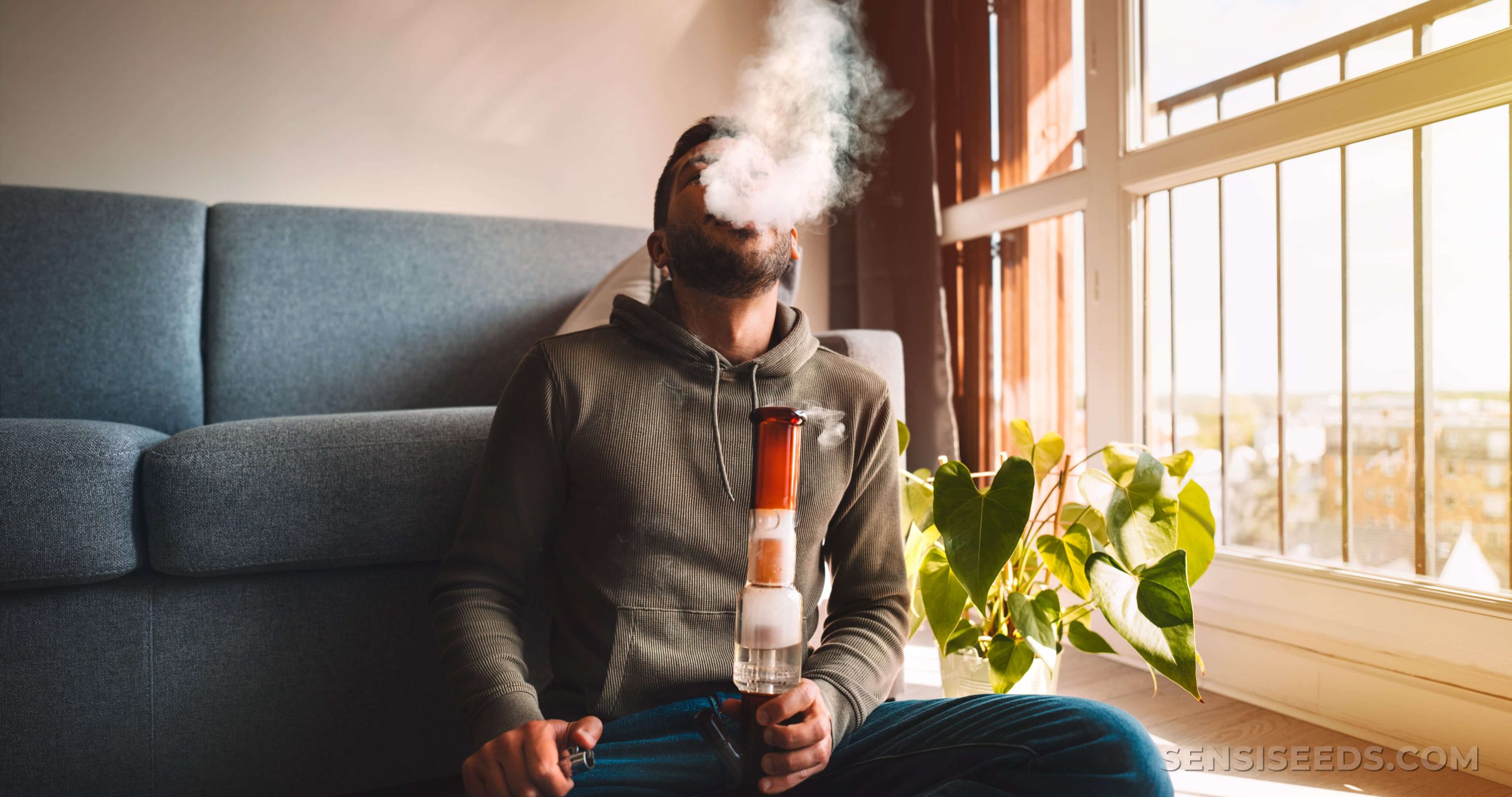

 Cannabis News2 years ago
Cannabis News2 years ago
 One-Hit Wonders2 years ago
One-Hit Wonders2 years ago
 Cannabis 1012 years ago
Cannabis 1012 years ago
 drug testing1 year ago
drug testing1 year ago
 Education2 years ago
Education2 years ago
 Cannabis2 years ago
Cannabis2 years ago
 Marijuana Business Daily2 years ago
Marijuana Business Daily2 years ago
 California2 years ago
California2 years ago



